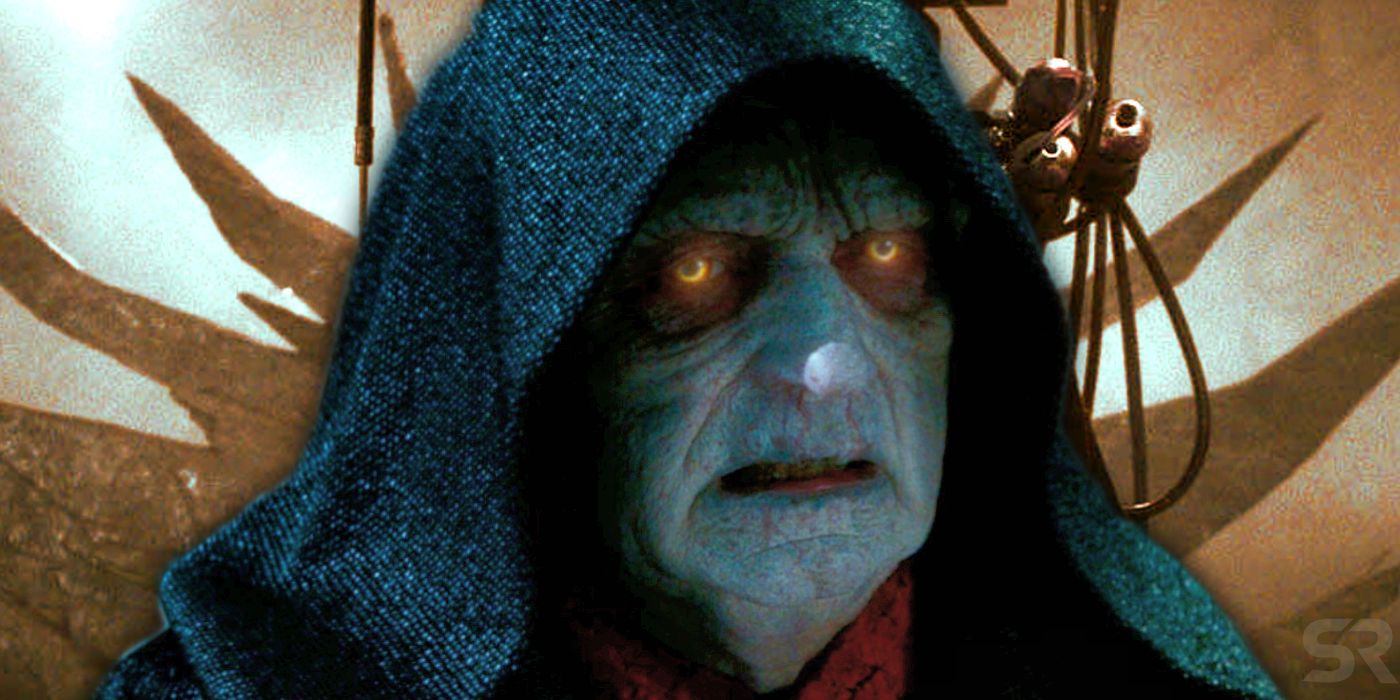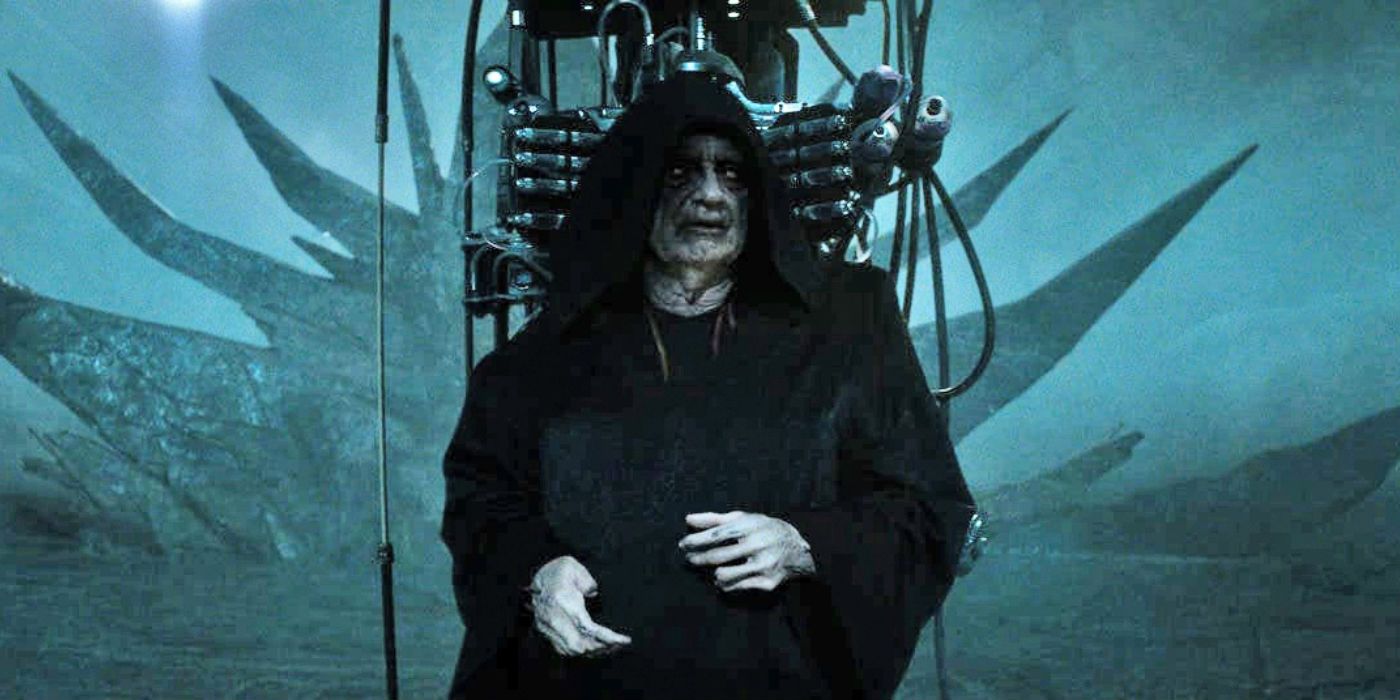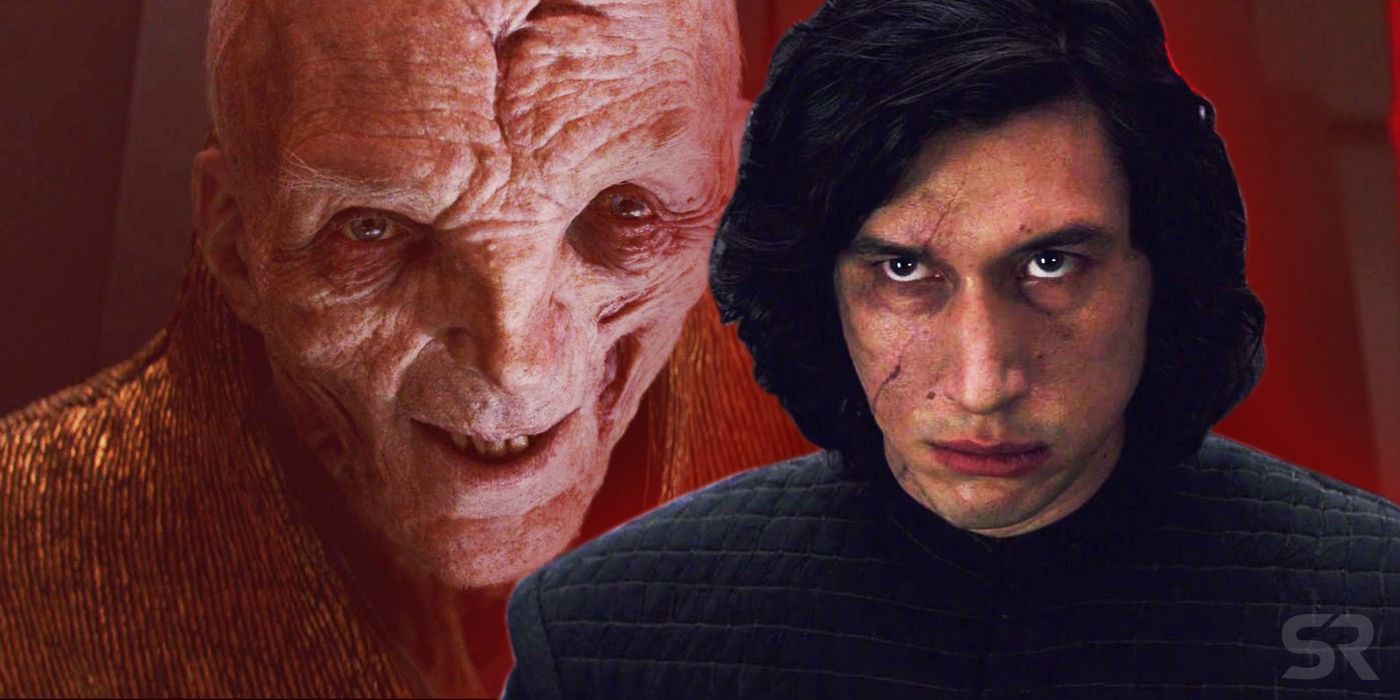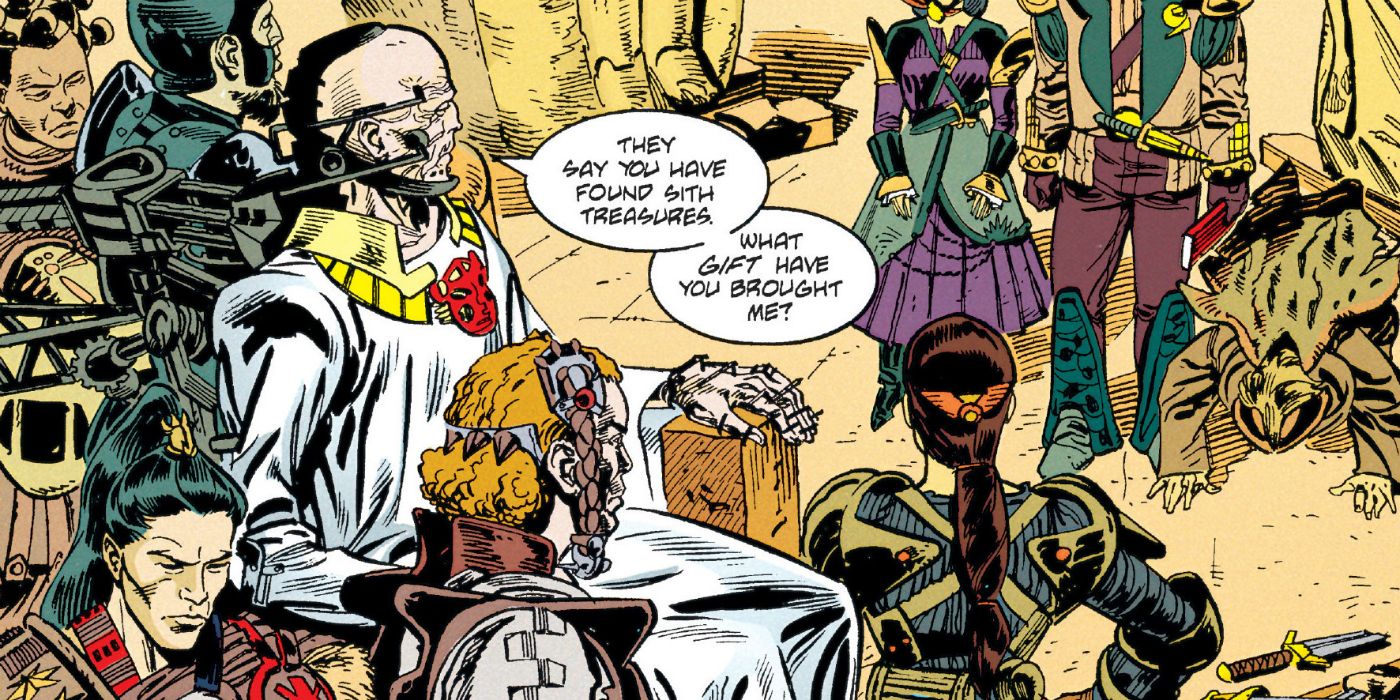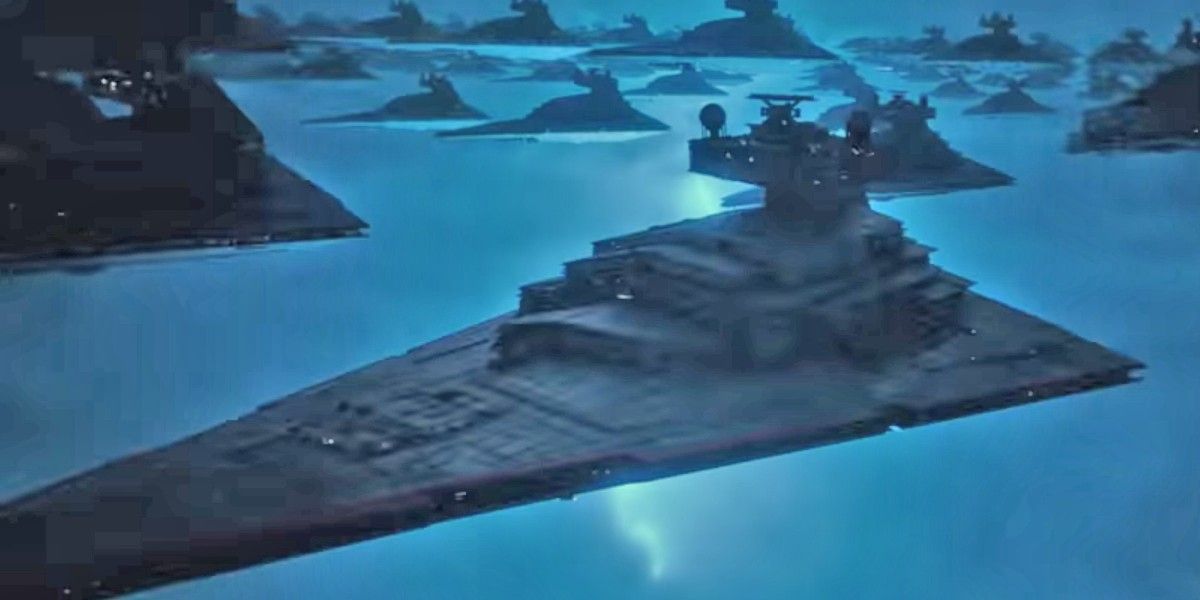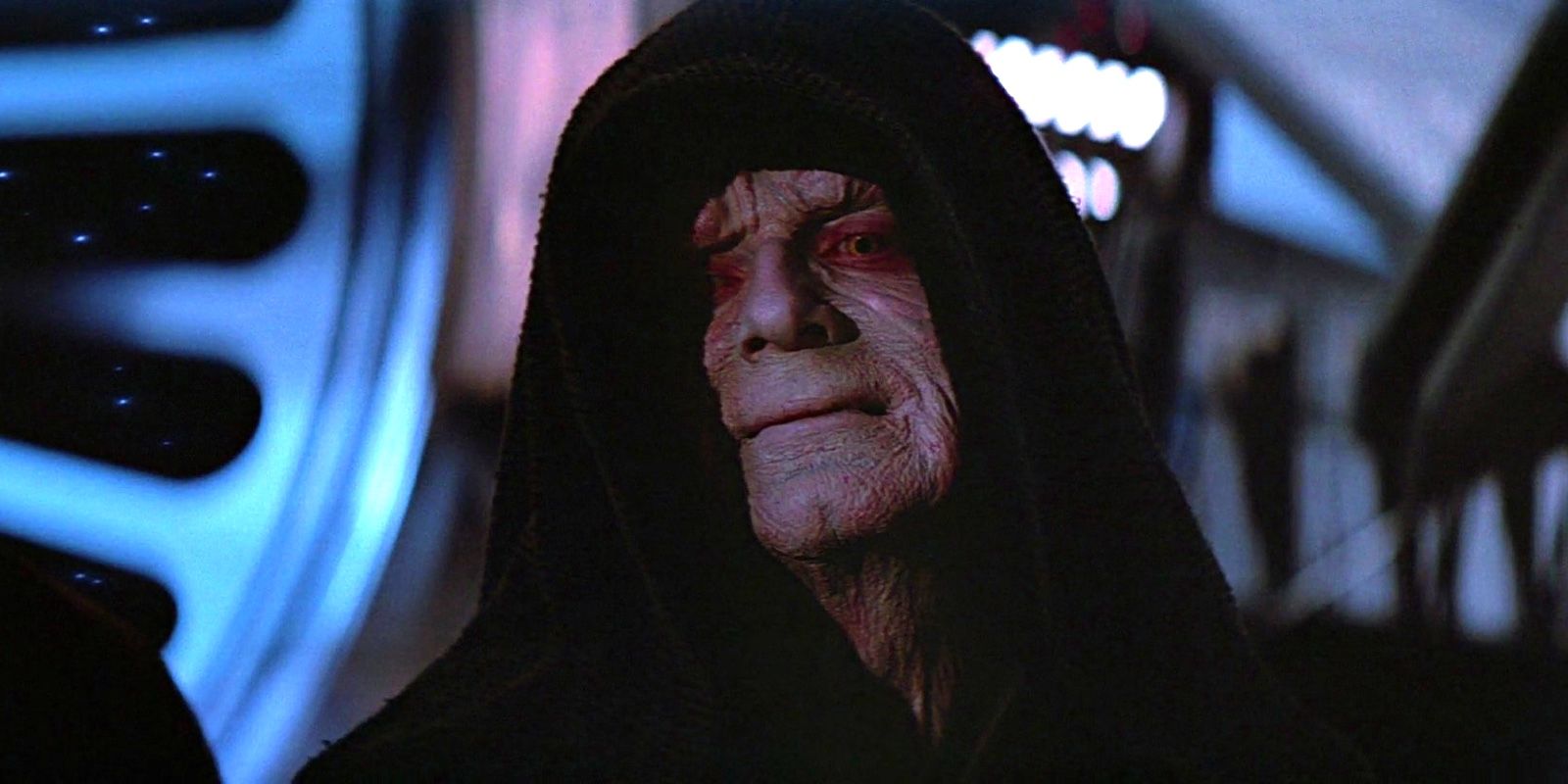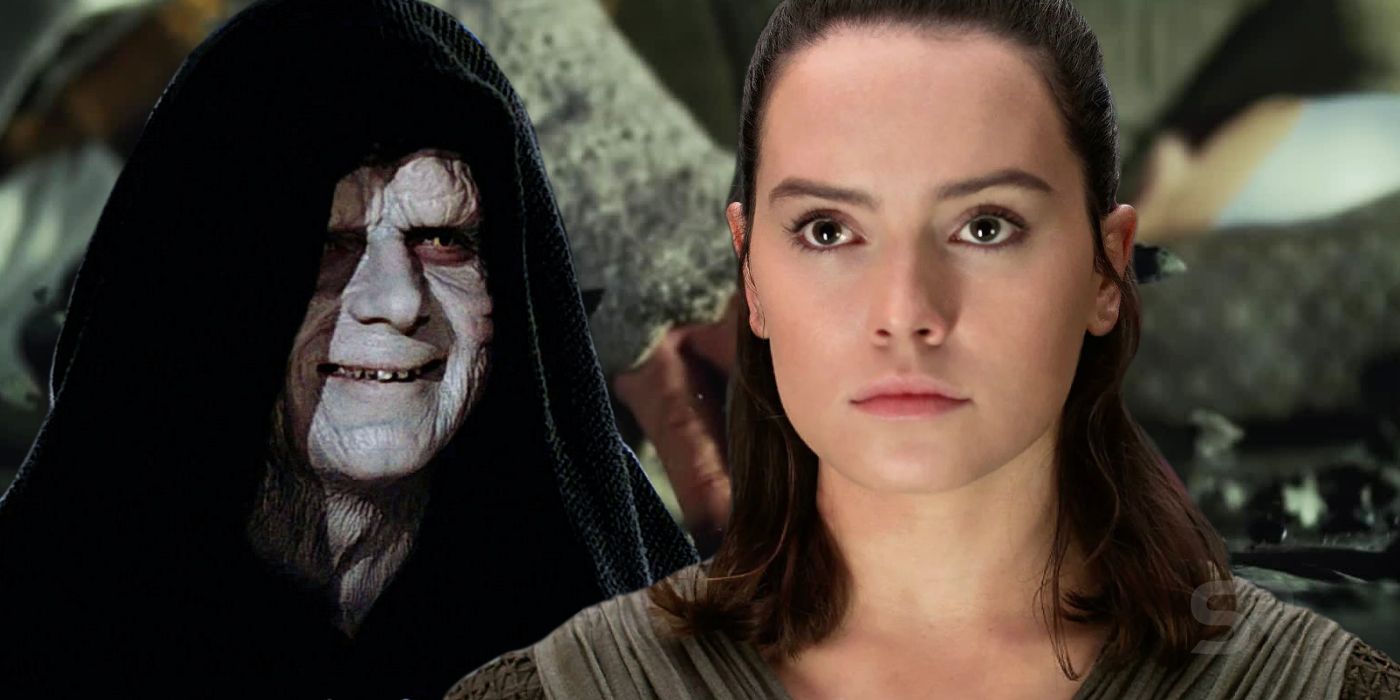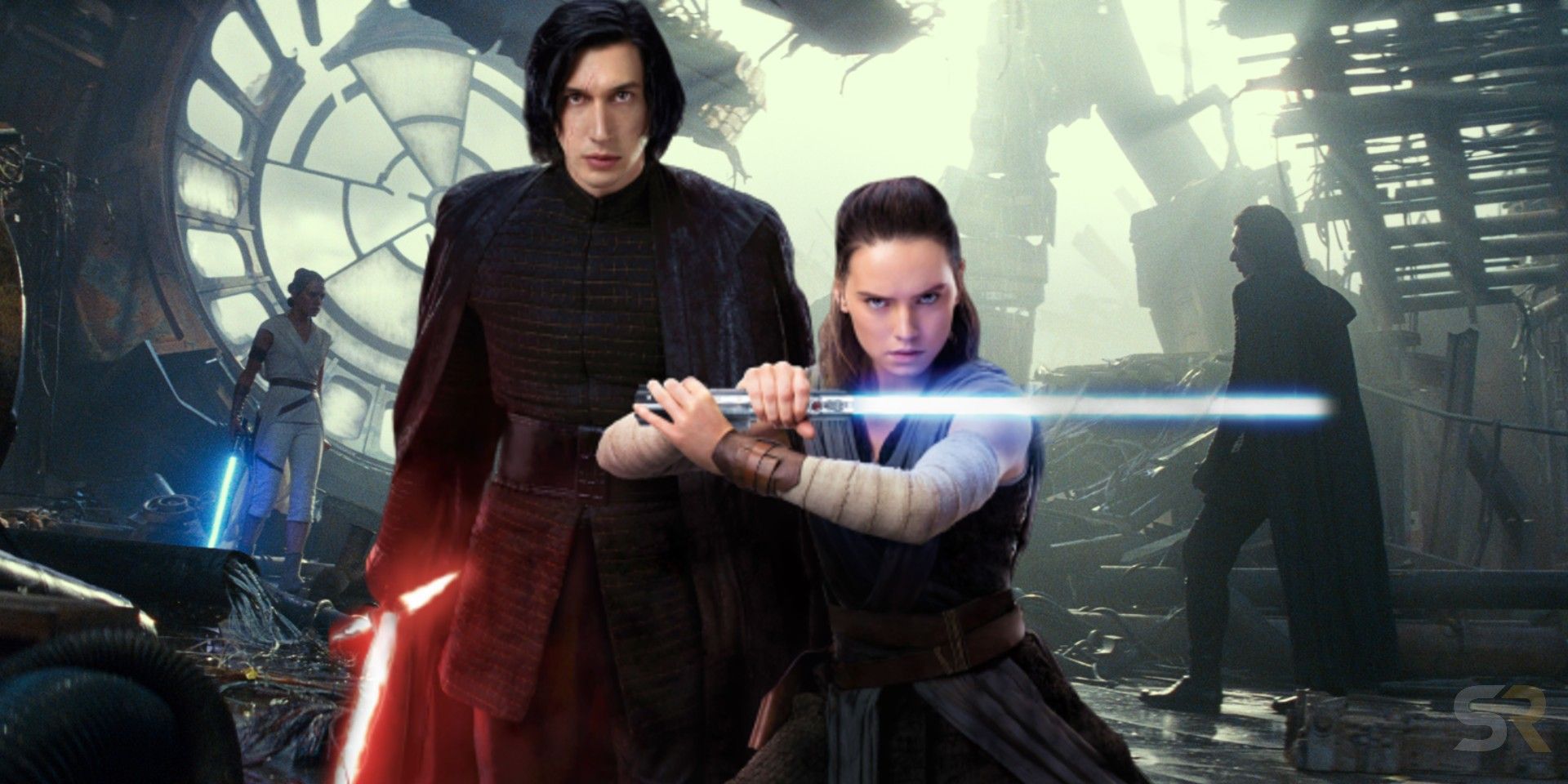Here are the big reveals about Emperor Palpatine in the Star Wars: The Rise of Skywalker novelization. After serving as the Skywalker saga's overarching villain for the first six movies, Palpatine was absent from both The Force Awakens and The Last Jedi, as he was presumed to be dead. However, The Rise of Skywalker revealed Palpatine had been pulling the strings all along in the sequel trilogy, responsible for everything including the formation of the First Order and Ben Solo's corruption. Despite a lack of clear setup in the other movies, most fans were onboard with Palpatine's return in the grand finale, making him the singular thread that tied all of the trilogies together.
Rise of Skywalker marketing was very vague on Palpatine's role, saving the juicy details for the film. During the campaign, that appeared to be part of Lucasfilm's spoiler-averse advertising strategy, hoping that the Emperor's return was enough to get people excited. Unfortunately, the finished movie left a lot of questions unanswered, as Palpatine's backstory between the original and sequel trilogies was hardly explored. Original drafts of the Rise of Skywalker script revealed more, but the information was eventually cut. This was frustrating for viewers, many of whom felt Palpatine's role was sudden and rushed. But with the release of the Rise of Skywalker novelization, fans are learning more about the Sith master.
As was the case with the Force Awakens and Last Jedi novelizations, the Rise of Skywalker book essentially acts as an "expanded edition" of the movie, adding in more scenes and fleshing out elements that were only hinted at in the movie. Here, we run down all it has to say about Palpatine's role in The Rise of Skywalker.
The Rise of Skywalker's Palpatine Is A Clone
One of the biggest mysteries about Palpatine in The Rise of Skywalker is how he was still alive. In Return of the Jedi, he was thrown down a Death Star shaft, and then the space station exploded. As the Emperor will say, the dark side is a pathway to many unnatural abilities, but it seemed like a tall order for even a powerful Sith to survive that. Sadly, the movie skirts around this issue; Palpatine is already alive before the film proper starts, and the only clue audiences get is a clear prequel callback to the famous Darth Plagueis scene.
A huge revelation in the novelization is confirmation The Rise of Skywalker's Palpatine is a clone of the Emperor. This means his original body was indeed destroyed when Darth Vader turned on his old master. This passage in the book says the clone houses "the Emperor's actual spirit," but it is not well-equipped considering how powerful the Emperor is. This is why Palpatine's plan is to perform the Sith Ritual, transferring his essence to a new body - be it Kylo Ren or Rey. He knows the clone has a limited shelf life and he needs a new, viable body.
Palpatine Made Snoke As A Test for Kylo Ren
Supreme Leader Snoke was initially billed as the big bad of the sequel trilogy; in The Force Awakens, he was basically the Palpatine equivalent. That's why it was so surprising to see Snoke discarded in The Last Jedi, with Kylo Ren appointing himself new Supreme Leader. While high in shock value, the twist angered many viewers upset that Snoke was killed without so much of a hint of backstory revealed in two films. The Rise of Skywalker obviously didn't bring Snoke back to life, but the film did sketch out the character's history.
During the scene when Kylo Ren first encounters Palpatine, the Emperor tells the troubled youngster that he made Snoke. On Exegol, there's even a tank with multiple Snoke bodies. The Rise of Skywalker book goes one step further, revealing Palpatine created Snoke specifically as a test for Kylo Ren. "You did well to destroy him," the Emperor says to Kylo. So, Snoke was merely a stepping stone for Kylo Ren's journey to the Sith throne, proving to Palpatine he had a worthy successor in Darth Vader's grandson. This explains why Palpatine did not transmit his message to the galaxy until after Snoke was killed in The Last Jedi. When he sensed that, Palpatine knew it was time to strike.
Palpatine Is Attached To An Ommin Harness
One of Disney's most controversial decisions since acquiring Lucasfilm remains rebranding the old Expanded Universe as Star Wars Legends, wiping the slate relatively clean for the new canon. For years, fans enjoyed reading those novels and comics, following new stories and falling in love with new characters. While Legends isn't canon, Lucasfilm still pulls from the publications from time to time. There are numerous instances of Disney's materials integrating elements from Legends, including Grand Admiral Thrawn on Rebels and Baby Yoda's Force healing ability in The Mandalorian. The Rise of Skywalker continues this tradition with another Legends nod.
In the film, Palpatine's deformed clone body is attached to a machine so that it can live. The book refers to this as an Ommin harness, a reference to Legends character Ommin. Ommin was a Sith sorcerer who had to build an exoskeleton for himself after his dark side studies left him in a physically depleted state. The Rise of Skywalker is the first time Ommin has been mentioned in Disney's new canon, so it'll be interesting if the character appears somewhere else down the line. He could be interesting to explore further in a comic series or novel. It would substantially deviate from Legends (Ommin lived thousands of years before the Battle of Yavin), but perhaps he could pop up in High Republic books.
Palpatine's Disciples Built Exegol's Sith Fleet
The visual of Palpatine's Sith fleet, consisting of thousands of Star Destroyers, was an awe-inspiring sight to behold. It also was a very clear illustration of what the Resistance was going up against this time around, hammering home the classic Star Wars theme of the scrappy underdogs taking on a well-resourced adversary. Still, when people took a minute to think about it, they wondered where this incredible navy came from. Fortunately, the book has the answer.
In the novelization, the Emperor mentions, "For a generation, my disciples have labored," indicating that his loyal followers spent years building the ships on Exegol while Palpatine waited for the opportune moment. Admittedly, this can likely be inferred in the film, but it's still nice to have this bit cleared up in case there was any confusion. The Sith fleet was all part of Palpatine's contingency plan as he plotted his ultimate revenge.
How Emperor Palpatine Survived Return of the Jedi
Based on what's presented early in the book, readers probably had some idea how the Emperor survived the Battle of Endor, but towards the end, fans get to see how exactly it happened. Motivated by the "flickering light" he sensed in Darth Vader, Palpatine had been making the necessary preparations for his eventual death for years. So, when Anakin threw him into the Death Star's shaft, Palpatine was ready. As he was falling, the Emperor "thrust his consciousness far, far away" into his clone body on Exegol. Sadly for him, "the transfer was imperfect" and the clone body wasn't an ideal vessel for his power.
As if the very existence of the sequel trilogy didn't add an undercurrent of sadness to Return of the Jedi, this revelation makes the Rebels' victory downright tragic. While Luke, Han, and Leia partied the night away with the Ewoks, their greatest enemy was still alive, figuring out his next steps. This isn't to say the Alliance's win was all for nothing; they did topple the Empire and end the Galactic Civil War. But rewatching the end of Return of the Jedi now has an entirely new context that really packs an emotional punch.
Rey's Father Is A Failed Palpatine Clone
When it was determined the Palpatine clone seen in Rise of Skywalker wasn't suitable for the Emperor's essence, members of the Sith Eternal went to work on engineering a new body for their master's spirit. One of the attempts is described as a "useless, powerless failure" who nevertheless was still perfectly healthy. This "not-quite-identical clone" couldn't house Sidious' power, but was still of use since he was allowed to venture out into the universe and eventually become Rey's father. All of those "who is Rey's grandmother?" theories can go to rest. She doesn't have one, since her father was this failed clone.
This bit does spare fans the unpleasant mental image of Palpatine having a love life, which some will be thankful for. It'll be interesting to see if Rey's father (who remains nameless) will be explored in future canon materials. It is curious why he was able to stick around even after Palpatine knew the body wasn't a possible conduit for his spirit. Perhaps Palpatine hoped this failed clone could father a new vessel for him, with Rey being a fallback option if the Sith Eternal continued to be unsuccessful. Knowing how Palpatine always liked to plan ahead, that's not out of the question. He might have thought his "son" could have better odds than his followers.
Palpatine Attempted to Create A Force Dyad With Anakin
One of the most prominent plot points in the sequel trilogy was the strong connection between Rey and Kylo Ren, which was revealed to be a rare Force Dyad in The Rise of Skywalker. According to the film's visual dictionary, a Force Dyad is when "two Force-sensitive individuals share a unique Force bond, connecting their minds across space and time." This is why Rey and Kylo were able to do their "Force Skype" calls in The Last Jedi and communicate with each other from opposite ends of the galaxy. Palpatine was excited to learn about the dyad (drawing on its power to restore his clone), and that's because it's something the Sith had spent many, many years trying to find.
When Palpatine senses Rey and Kylo's dyad in the novelization, author Rae Carson notes the Emperor had tried to create a dyad with Anakin, just as Plagueis had with Sidious. The Emperor knew any attempts were "a pale imitation, an unworthy but necessary successor to the older, purer doctrine of the Dyad." Based on the context, Rey and Kylo's dyad was formed through natural means; the Force just inherently connected those two for reasons unknown. The Sith had been trying to artificially formulate one over the years.

